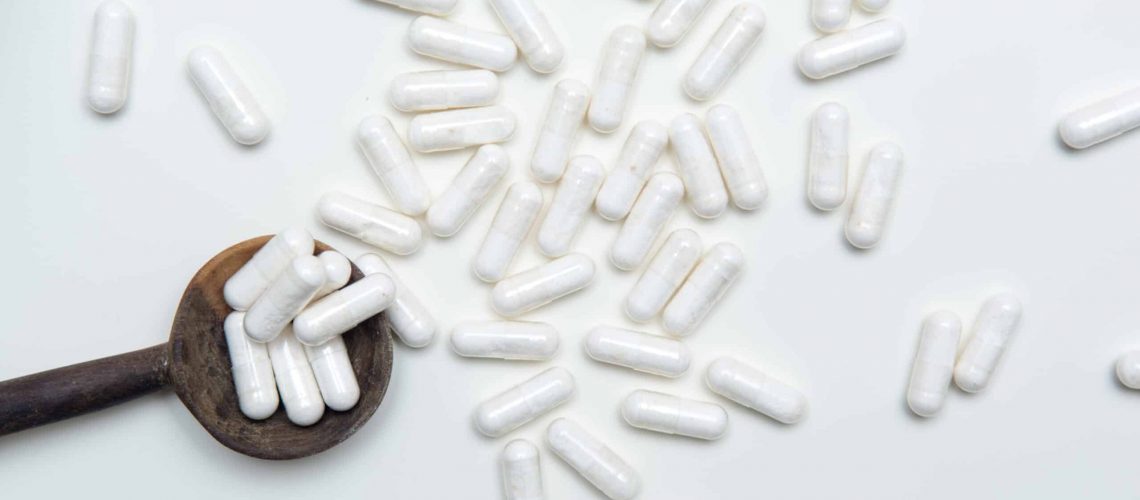Have you ever looked at a tablet and thought it was too big to swallow whole and that cutting it in half would do no harm? Or crushed a pill and mixed it with something tasty to make it easier to swallow? This would seem like a very reasonable thing to do, and indeed a study of care homes in England revealed that 40% of nurses routinely crush one or more medications on every drug round to help patients to swallow them more easily. However, depending on the tablet, crushing or cutting it up could actually prevent it from working properly, cause harm both to the person taking it and the person manipulating it, and may even be illegal.
The size of a tablet is mostly determined by the amount of active drug that is required to deliver a therapeutic effect to the patient, and also the other ingredients that are needed to ensure that the drug remains chemically stable and is broken down in the right part of the body. Some medications are labelled “EC”, which stands for “enteric coated”, and these tablets are covered in a substance which prevents them from being broken down in the stomach, either because the drug inside would otherwise cause irritation to the stomach, or because the acidic environment would destroy the drug and prevent it from working. Some common examples of enteric coated medications are aspirin, the painkiller diclofenac (also known as Voltarol) and the antibiotic nitrofurantoin, often used to treat urinary tract infections.
Some medications can be chemically unstable and so need to be mixed with other substances to give them a longer shelf life. For example nifedipine, a drug used to treat angina and high blood pressure, is very sensitive to light and so needs ingredients added to it to prevent it from degrading prior to being swallowed. Others, such as ibuprofen and quinine, are covered in a sugar coating to make them more palatable as they would otherwise taste incredibly bitter. Some drugs are also mixed and coated with ingredients which prevent them from being broken down too quickly once inside the body, so that the patient receives a small amount of the drug over a long period of time, usually 12 or 24 hours. Such drugs are marked LA (long acting), SR (sustained release), CR (continuous release), or XL, XR or ER, all of which mean “extended release”. If such a tablet were to be crushed, the coating which stops the tablet being dissolved slowly would be destroyed, meaning that the patient may receive the full dose of the medication all at once. Many blood pressure tablets have a sustained release effect, and crushing such a pill could lead to the patient unintentionally receiving a large single dose of the drug, which might trigger a dangerous drop in blood pressure followed later by unfavourably high readings again once the initial effect has worn off.
There is also concern that crushing or cutting up a tablet may lead to underdosing, i.e. the patient not receiving the full dose required for a therapeutic effect. One studyii found that up to 25% of the active drug in an aspirin tablet was lost when a pestle and mortar was used to crush it prior to mixing it in water. This is of particular concern for patients taking medications such as warfarin and digoxin (a drug to slow the heart rate), since there is a very small window for achieving a dose in a patient which is strong enough to have an effect but not so strong as to be toxic.
Certain medications are also known to present a risk to whoever cuts up or crushes the tablet, since some particularly potent drugs can be absorbed through the skin, or particles of the crushed powder inadvertently inhaled. Examples of this include oral contraceptives, tamoxifen, a drug given to women with breast cancer, methotrexate, which is sometimes given to patients with rheumatoid arthritis, and finasteride, a drug given to men with an enlarged prostate. Medications like these have been linked to allergic skin reactions, complications with foetal development and cell mutation, and so accidental exposure should clearly be avoided at all costs.
The legal implications of crushing tablets is also unclear. Medications are only licensed to be administered in the form in which they are found in the packet. Altering the form in some way causes the drug to then be considered unlicensed, which means that the manufacturer may deny responsibility if any harm should come to the patient after ingesting it. Under the Medicines Act doctors are the only people allowed to suggest that a drug is used in an unlicensed fashion, and it is therefore illegal to render a medicine unlicensed without the authorisation of the prescribing doctor. In reality, however, many doctors may be unsure about which tablets are safe to be crushed and split, since the data regarding this are sparse, and so the best person to consult would be the pharmacist dispensing the medication.
The moral of the story really is that however well intentioned, crushing or cutting up pills is best avoided. These days many tablets do come in liquid formulations and so if you do have any concerns about a particular pill, have a chat with your pharmacist when you drop in the prescription.
